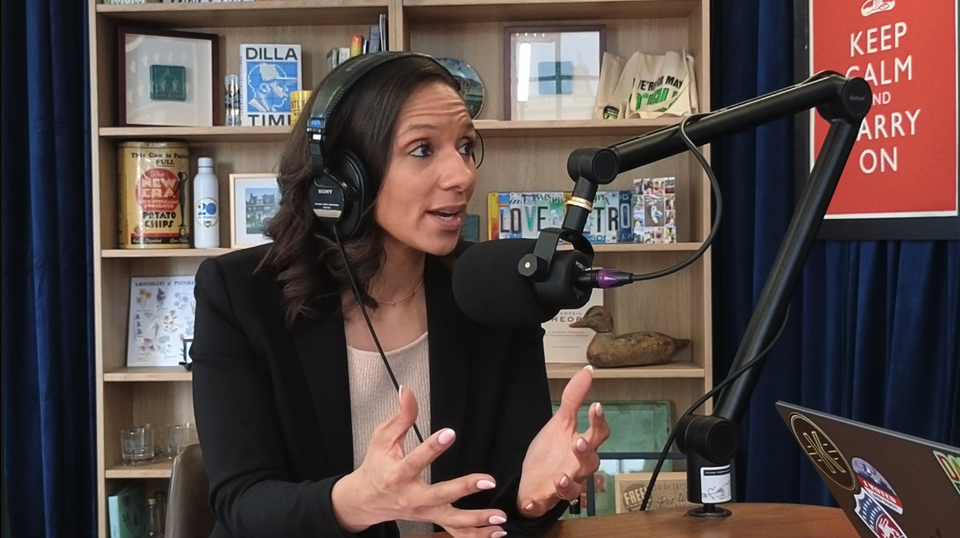Detroit has been legendary in the past, in some respects, for all the wrong reasons. One of those reasons has been it’s historically been difficult to deal with city hall.
One way to change that is to make data available to all, or what’s called in tech parlance “open data.” After all, data is knowledge, and knowledge is power. Initiatives like Loveland have given Detroiters a little taste of what’s possible with open data, but recently, the doors have flung open when it comes to getting information from the city, if you know where to go.
Accessing everything from crime reports to property data was a muddy, annoying and painful process, but now there’s a litany of tools for people to use over at http://wwww.detroitmi.gov/data.
It’s an impressive turnabout for a city as large and with as many challenges as Detroit. But how does that happen? What precipitated this rather large shift in a city that has had past leadership that was, in short, shifty?
Not to mention, the amount of Detroit data available can feel immense at first, but tied together in the right way, could be really useful. Almost everything is there, from bike routes to road signs to police data to Detroit Public School locations.
One way to help make sense of all that information is through the use of applications. To that end, the city is holding what’s a called a hackathon where talented people work together in a 24-hour timeframe to see what they can come up with in a short period of time. It’s called #hack4detroit and it’s at Grand Circus on June 12 and 13.
There’s a $5,000 prize to a winning individual or team who makes an app using this newly open data. It’s done in partnership with Automation Alley, and the judges are Beth Niblock, Chief Information Officer of the city of Detroit; Sean Hurwitz, CEO of Pixo Group; Brian Balasia, the CEO of Digerati; and Will McDowell, a Detroit Labs business analyst. Anyone can register, but the participation is limited to 65. It’s $20, includes breakfast and lunch, and closes June 5 June 10 thanks to an extension on the deadline.

We exclusively talked last week to Garlin Gilchrist II, who’s been in the driver’s seat for some of these open data initiatives. He’s a Detroit native and after college at the University of Michigan and working time in Seattle for Microsoft and Washington D.C., he came back to raise his family in his hometown and hopefully, through his work, make a difference.
Daily Detroit: So where did the idea of moving Detroit towards open data start from? Because historically, there’s a reputation of the city in the past not being open and transparent with data. What was the impetus and what are you hoping going forward with this for citizens?
Gilchrist II: I would first say the credit goes to Mayor Duggan, for really coming in and wanting to reset the relationship between Detroiters and city government. One way to reestablish your commitment to a relationship is saying, “You know what? I’m going to be honest with you, I’m gonna be clear with you, I’m gonna be as transparent as I possibly can with you.” That principle is where this comes from.[quote_left]”The data and the information that we generate is essentially public so we need to give it to the public in a way that humans can understand and that machines can process.” [/quote_left]
There’s really a movement around the globe and around the country where more and more cities are starting to enact policies like this that say that we’re no longer going to hide behind the Freedom of Information Act, we have come to the realization, which was always true, that the data and the information that we generate is essentially public so we need to give it to the public in a way that humans can understand and that machines can process.
But to answer your question on where we see this going? Open data, I believe, is really foundational to having the City of Detroit be a key player in the emerging, innovation economy in this city. There are all sorts of opportunities for everything from new business models to new opportunities for accountability within government that are enabled when the city is being open and transparent about how about we do business and how we operate. So I am all for finding as many opportunities for people to take advantage of this as possible.

Daily Detroit: What has been largest challenge that you’ve had to work through in this transition to a new and open data world?
Gilchrist II: As you know, the city is, as part of the plan of adjustment, we received a significant amount of dollars. We’ve allocated a significant amount of dollars to be able to put towards upgrading the city’s technology infrastructure. So that’s everything from city employees getting new versions of Windows on their computers because they’re working off of versions that were no longer covered by service agreements to getting new hardware and other software on their systems, to upgrading infrastructure around how the city does permitting, how we manage our computer dispatch for police and fire and all those sorts of things. There’s a lot of technology upgrades that are happening.
What’s been tough is that in the interim, while those technology upgrades are rolling out or have yet to roll out yet, I’m trying to get data into our open data portal so they can publicly consumable from systems that were never designed to be public facing. Our permitting infrastructure for example, that system we deployed, I believe, in the early 2000s. That was really designed to be used by government employees so it wasn’t designed to make reports even that were available to the public. So I’ve had to find a way to understand those systems and the databases underlying on the systems, and then figure out how we can we tap into those databases directly, so then we can then put things to a format and a structure that we can share via open data portals.
Daily Detroit: And the successes?
Gilchrist II: I’ll give two examples. On the internal operational benefits side, we’ve seen really great instances of departments that either didn’t share data previously or would share data on a relatively infrequent basis now being able to communicate with one another in minutes or seconds.
We had a situation where the Detroit Building Authority which handles a lot of most of the demolitions on behalf of the City of Detroit in concert with the Land Bank.
There was an individual who wanted to dispute, he wanted to argue that the building that he was the owner of should not be knocked down, should not be demolished. The person said that he had had work done on the place and worked on the property and so it was in good condition and didn’t need to be demolished.[quote_right]”They were able to look from their cellphone and they said, “What’s your address again?” and figure out that this person actually hadn’t pulled any permits for any work and the only permit that existed is the demolition permit for the property.”[/quote_right]
Typically what would happen if there was dispute like that is then the building authority would make then a formal request to the Building Safety and Engineering and Environment Department, BSEED, who would then do some research to find out what permits were pulled and when they were pulled and what the nature of those permits were and all kinds of stuff. Then they would get back to the building authority as what that person had done to verify the claim. That used to take a number of weeks.
But now that we are putting out BSEED-issued permits on a daily basis, and this is both building permits as well trade permits. They were able to look from their cellphone and they said, “What’s your address again?” and figure out that this person actually hadn’t pulled any permits for any work and the only permit that existed is the demolition permit for the property. That information sharing enabled us to really resolve that situation very quickly in a way that it took minutes rather than weeks.

We’ve also seen really good uptake from community organization and neighborhood organizations. They’re using it as a way to better understand how the city understands their neighborhood or their community. Our open data portal has been the subject of agenda item for everything from the Corktown Neighborhood Association, and the Sherwood Forest one too, as they looked at how they’re going to respond to crime activity. Also the Detroit Digital Justice Coalition who has been using live data from the portal. So I am really happy that such a diverse set of Detroiters are taking an interest and going in to see what’s happening. I’m surprised everyday, I log on and I see the custom maps that people create that take cuts of their neighborhood or their street to see what we know about it based on what’s in the portal. That’s really exciting.
Daily Detroit: What’s available? What can you really do with this data?
Gilchrist II: You’ll find government, finance, property and parcels, public safety categories, and you can click on those and see what’s there. So if you click on the public safety button and see here’s all of the data that we have related to police activity and reported crimes. Or you can click on the property and parcels and you can everything from the BSEED permits issued to the proposed or projected demolition activity from the Detroit Land Bank Authority and the hardest hit fund zones.
You can either straight download the data set from the website, then to use it in Excel or download the CSV if you want to do some more sophisticated programming with it, as typically what your real data science nerds are going to do.
But also if you want to just connect the data set programmatically, there is an API (Application Programming Interface) associated with, it’s a kind of platform that we use for that open data portal so you can use the API that is documented via the site’s documentation to be able to write programs that use this data portal as a resource for whatever application you’re trying to write, whatever website you’re trying to build that could leverage that. Those are the best ways to directly get engaged with the open data portal and the data therein.
Want to play with the data yourself? Check out the Detroit data website here and if you want to lend your shoulder to the wheel for making an app, register for #hack4detroit here.














